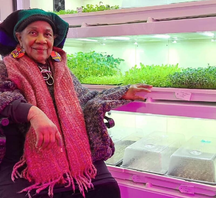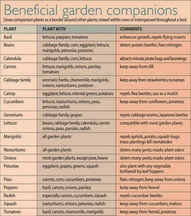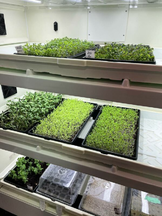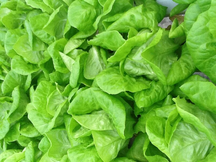We wondered how the nutrition from one ounce of mixed microgreens compares to a salad consisting of four lettuce leaves, one ounce of shredded carrot, a one-quarter-inch tomato slice, and a tablespoon of Italian dressing. So we asked several AI sources.
Nutrition Comparison: 1 oz Mixed Microgreens vs. Small Salad
To compare the nutrition of one ounce of mixed microgreens to a salad made of four lettuce leaves, one ounce of shredded carrot, a quarter-inch tomato slice, and a tablespoon of Italian dressing, we’ll break down each component and summarize the key differences.
1 oz Mixed Microgreens
Calories: 5–28 (depending on the mix; most sources report 5–25)
Protein: 1–2.2g
Carbohydrates: 1–4.4g
Fiber: 1–2.2g
Fat: 0g
Vitamins & Minerals (per ounce):
Vitamin A: 60–79.6% DV (540–714μg)
Vitamin C: 6.6–14mg (15% DV)
Calcium: 40–88mg (4–8% DV)
Iron: 0.2–15.9mg (2–15% DV; varies by type)
Potassium: Up to 298mg
Folate: Up to 66μg
Other: High in antioxidants, phytonutrients, and sometimes sulforaphane (especially in broccoli, kale, cabbage mixes)
Key Point: Microgreens contain 4–20 times more vitamins, minerals, and antioxidants than their mature counterparts by weight, making them extremely nutrient-dense for the calories provided.
Small Salad (4 Lettuce Leaves, 1 oz Shredded Carrot, 1/4" Tomato Slice, 1 Tbsp Italian Dressing)
Lettuce (4 leaves, ~20g)
Calories: ~3–4
Protein: 0–0.3g
Carbs: ~0.6g
Fiber: ~0.2g
Vitamin A: 42% DV (red leaf), 82% DV (romaine)
Vitamin C: Small amount
Iron: Small amount
Shredded Carrot (1 oz / 28g)
Calories: 10
Carbs: 3g
Fiber: 1g
Sugar: 1g
Vitamin A: Very high (from beta-carotene, but specific DV not listed for 1 oz)
Vitamin C: Small amount
Tomato Slice (1/4" thick)
Calories: 0
Carbs: 1g
Fiber: 0g
Vitamin C: Trace
Italian Dressing (1 Tbsp)
Calories: 35
Fat: 3g
Carbs: 2g
Sugar: 2g
Sodium: 146mg
Vitamins/Minerals: Minimal
Total Salad Nutrition (Approximate)
Calories: ~48–52
Protein: ~0.3g
Carbs: ~6–7g
Fiber: ~1.2g
Fat: 3g
Vitamin A: 40–80% DV (mainly from lettuce and carrot)
Vitamin C: Small amount
Calcium/Iron: Small amounts
More information is in the related FAQ.
Summary & Key Differences
Nutrient Density: Microgreens deliver much higher concentrations of vitamins, minerals, and antioxidants per ounce than the salad, especially for vitamins A, C, K, and certain phytonutrients.
Calories: The salad provides more calories, mostly from the dressing, and more fat. Microgreens are extremely low-calorie and fat-free.
Protein: Microgreens offer more protein per ounce than the salad.
Micronutrients: Microgreens are richer in minerals (iron, calcium, potassium) and vitamins (A, C, K, E, folate) than the small salad, even though the salad contains a variety of vegetables.
Antioxidants & Bioactives: Microgreens are especially high in antioxidants and beneficial plant compounds like sulforaphane (in brassica mixes), which the salad lacks in significant amounts.
Volume & Satiety: The salad, with more bulk and dressing, may be more filling due to its higher volume and fat content, but is less nutrient-dense by weight.
Conclusion
One ounce of mixed microgreens provides a far greater concentration of essential vitamins, minerals, and antioxidants than a small salad made of four lettuce leaves, a small amount of carrot and tomato, and a tablespoon of Italian dressing. While the salad offers more calories and fat (mainly from the dressing), microgreens are a superior source of micronutrients and phytonutrients per calorie and per ounce. For those seeking maximum nutrition in a small serving, microgreens are the clear winner.
Garden of Eden Urban Farming
Controlled environment agriculture, hydroponics, microgreens - Since 2013
Gardeners' Blog
☰
News
How nutritious are microgreens, really
Microgreens are happening in Seattle
Here's a list of the most popular microgreens in the Seattle area as compiled by our friends in the cloud.
The Seattle microgreens market is shaped by both chef demand and consumer trends, with a strong emphasis on flavor, color, and versatility.
The Seattle microgreens market is shaped by both chef demand and consumer trends, with a strong emphasis on flavor, color, and versatility.
DOGE eliminates key low income food access program
Politico reports that "The Agriculture Department has axed two programs that gave schools and food banks money to buy food from local farms and ranchers, halting more than $1 billion in federal spending. Roughly $660 million that schools and child care facilities were counting on to purchase food from nearby farms through the Local Food for Schools Cooperative Agreement Program in 2025 has been canceled, according to the School Nutrition Association.
"Massachusetts Gov. Maura Healey, a Democrat, castigated the administration for the decision, noting that her state would lose $12 million it planned to dole out to school districts.
“'Donald Trump and Elon Musk have declared that feeding children and supporting local farmers are no longer priorities, and it’s just the latest terrible cut with real impact on families across Massachusetts,' Healey said in a statement."
"Massachusetts Gov. Maura Healey, a Democrat, castigated the administration for the decision, noting that her state would lose $12 million it planned to dole out to school districts.
“'Donald Trump and Elon Musk have declared that feeding children and supporting local farmers are no longer priorities, and it’s just the latest terrible cut with real impact on families across Massachusetts,' Healey said in a statement."
Life-affirming Gardening for Eldercare
By Garden of Eden Indoor Farming
Indoor gardening projects can bring benefits to retirement communities of all sizes. The projects proposed herein can assist residential and social communities with active engagement in a combination of social and business activity that provides both satisfaction and achievement.
As the world’s population becomes older, more urban and more atomized, social engagement becomes ever more important. Indoor gardening can be a key to active living with purpose. It can provide nutrition, often a serious problem for seniors, and it can provide meaningful work without adding stress to daily life.

Microgreens may exceed nutritional value of mature forms
Microgreens are young seedlings of edible plants that are harvested at an early stage, usually between 7 and 21 days after germination. They have gained popularity in recent years due to their unique flavors, textures, and potential health benefits. While microgreens are generally considered to be more nutrient-dense than their mature counterparts, it's important to note that specific nutrient content can vary depending on factors like the type of plant, growing conditions, and harvesting methods.
To Microgreen, or not to...
Why should a household consider starting a microgreens operation, and can they make a living at it?
Households should consider starting a microgreens business for several compelling reasons, and with the right approach, it is possible to make a living from it. Here's why microgreens can be an attractive business venture:
Let's talk about the church food!
Video tracks impact of historic high fat, high calorie diet, especially on African Americans, with especial reference to traditional church celebrations.
Farm in Container Fits Urban Spaces
Numerous companies are experimenting with portable farm environments. Here is an example.
Food insecurity continues in Greater Seattle
For thousands of King County, Washington, residents, having enough food to feed themselves and their families is a worry. The number of people seeking food assistance increased over the last year, according to a report by Public Health echoed by King County councillor Jeanne Kohl-Welles. This increase is happening while food costs are higher than ever before.
Tomato or not tomato, that is the question
We've had mixed success with tomatoes in our Seattle project, but others have had better outcomes. Here's one 2014 story from Southern California..
Dr. Maxine Mimms Visits Tukwila Garden
Well-known Tacoma educator Maxine Mimms recently visited the IFC Garden in Tukwila, Washington. The garden, established in 2021, is currently teaching indoor growing of microgreens and various leafy greens using multiple technologies. Teaching is coordinated by GOE president Michael Twiggs in associating with Maxine Mimms Academy (MMA).
MMA's indoor gardening program was established in 2013 and has trained indoor gardeners in Seattle, Tacoma and other cities. In addition to indoor growing, the program explores business aspects of gardening and the potential role of urban gardening as an economic engine that can innovatively create opportunities based on addressing the "urban food desert" observed in many cities around the world.
Dr. Mimms founded Maxine Mimms Academy in 2004, initially to address concerns about re-engagement of secondary school students who had experienced conflict with conventional education, often due to family and social issues. The Academy has since expanded into other areas of community based education.
Indoor Farm Collaborative (IFC) is a joint venture of several Seattle-area organizations and firms.

MMA's indoor gardening program was established in 2013 and has trained indoor gardeners in Seattle, Tacoma and other cities. In addition to indoor growing, the program explores business aspects of gardening and the potential role of urban gardening as an economic engine that can innovatively create opportunities based on addressing the "urban food desert" observed in many cities around the world.
Dr. Mimms founded Maxine Mimms Academy in 2004, initially to address concerns about re-engagement of secondary school students who had experienced conflict with conventional education, often due to family and social issues. The Academy has since expanded into other areas of community based education.
Indoor Farm Collaborative (IFC) is a joint venture of several Seattle-area organizations and firms.

Garden friends
In case you're old school and growing outdoors, here are some succesful planting groups. Where your lead "crop" is in the left column, pair with those in the center. We can't attest to the results, but it sounds reasonable. Sign up to share your own experience.


Micro-what? Diversify your diet!
Go to any health food store and you’ll be sure to find microgreens lining the produce section. They have been all the craze in the food sphere for the past couple of years but don’t let all of the hype confuse you–microgreens are a simple way to bring nutritional variety to your diet and can easily be grown in your own home!
Microgreens are a class of vegetable greens, in between a sprout and mature vegetable plant, (typically grown indoors and harvested 10-14 days after planting) and are especially conducive adaptable to an urban agriculture environment.
Microgreens require minimal space, materials and time making them extremely versatile and something you can do at home. They can be produced from a wide variety of plant seeds–sunflower, pea shoots and radish being most common but micro-herbs, -grains, and even -beans too. The possibilities are truly endless.
What they lack in size, they make up for in flavor and nutritional content. Fresh microgreens can contain up to 40X the nutrient content as compared to a mature plant leaf. Due to their high nutritional content, simplicity to grow and delicious bold flavors, microgreens serve as the perfect complement to a healthy diet and lifestyle.
Tune in next week to get the scoop on what you’ll need to get started in growing your own and even one of my favorite recipes for using these delicious and nutritious greens.

Microgreens are a class of vegetable greens, in between a sprout and mature vegetable plant, (typically grown indoors and harvested 10-14 days after planting) and are especially conducive adaptable to an urban agriculture environment.
Microgreens require minimal space, materials and time making them extremely versatile and something you can do at home. They can be produced from a wide variety of plant seeds–sunflower, pea shoots and radish being most common but micro-herbs, -grains, and even -beans too. The possibilities are truly endless.
What they lack in size, they make up for in flavor and nutritional content. Fresh microgreens can contain up to 40X the nutrient content as compared to a mature plant leaf. Due to their high nutritional content, simplicity to grow and delicious bold flavors, microgreens serve as the perfect complement to a healthy diet and lifestyle.
Tune in next week to get the scoop on what you’ll need to get started in growing your own and even one of my favorite recipes for using these delicious and nutritious greens.

Using a garden to tackle food inequities
Food is a human right. If specific communities are being left out of the equation, we need to break down the food system and rebuild it better. We need to build resilience for all in order to have a collective food secure future ahead of us.


Categories
Recent Posts
- How nutritious are microgreens, really
- DOGE attack on food security reaches Seattle
- Microgreens are happening in Seattle
- DOGE eliminates key low income food access program
- Life-affirming Gardening for Eldercare
- Microgreens may exceed nutritional value of mature forms
- To Microgreen, or not to...
- Seed oils pass safety & health review
- Wondering why YOU should care?
- Let's talk about the church food!
- Farm in Container Fits Urban Spaces
- Food insecurity continues in Greater Seattle
- Tomato or not tomato, that is the question
© 2025 GOE Urban Farming Inc
